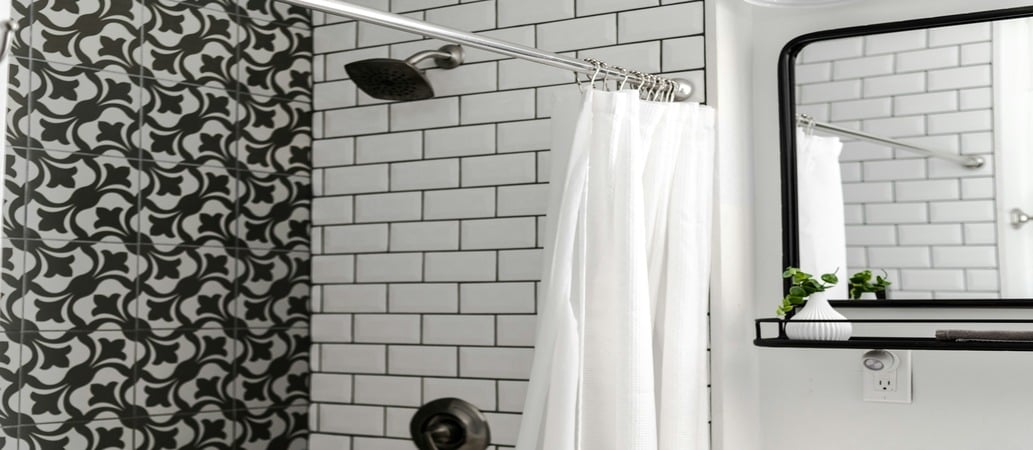A Useful Guide to Shower Wall Panel Removal

Installing shower wall panels is relatively simple and, if you have used PVC shower wall panels, removal should be just as easy. However, removal of any type of wall panel can result in damage to the walls, so knowing how to remove them correctly is key to minimising harm. In this blog we will look at how to remove Direct to Stud and Glue-up wall panels and hopefully provide you with the information you need to successfully remove your old wall panels.
What To Know About Shower Wall Panel Removal
Firstly, if any of the panels surround bathroom fixtures, these fixture need removing. This should be a fairly straight forward job, but if you are unsure, we would recommend employing the services of a professional.
Next, it is important to remove the panels in the same order as they were fitted, as there may be overlap in the corners, i.e. the panel that was installed first will be partially covered.
How To Remove Direct to Stud Shower Wall Panels
The first job you need to do when removing direct to stud wall panels is to uncover the nailing flanges around the edge of the panels, which will give you access to the fasteners holding the panels to the studs.
Tools You will Need
- Pencil Utility knife 4-foot level Screw bit Cat’s paw
- Mason chisel Drill
- Oscillating tools Hammer
- Flat bar
Steps for Removing Direct-to-Stud Panels
Draw a cut line – Draw a level line above the shower enclosure using the 4-foot level, ensuring this line is 6” from the enclosure to give yourself adequate space in which to work. You should also draw vertical lines on the side walls of your shower enclosure if the wall extends 6” past the panel.
Cut along the line to expose nail flanges – Using the oscillating tool, make a clean cut along the line and remove the drywall between the line and the panels using a hammer and flat bar.
Unfasten panels from the studs – Your panels may be held by screws or nails, so you will need to use a drill and screw bit to ‘back out’ these screws. A cat’s paw pry bar is perfect for use on nails.
Cut the sealant – Cut the sealant that joins the panels to the shower base or bath with a utility knife.
Remove panels – Remove the panels in the reverse order they were installed, starting with the corners, then the sides, and finishing with the back panel.
How to remove glue-up shower wall panels
Removing glue-up shower wall panels is easier that removing direct to stud shower panels, requiring fewer tools and less time.
Tools you will need
- Utility knife
- Tongue and groove pliers
- Clean cloth
- Putty knife
Steps for Removing Glue-Up Panels
Cut the sealant around the panels – Use your utility knife to cut through the sealant around the wall panels, including where the panels meet the bath or shower base rim. If there are several panels, there may be sealant where corner panels overlap; remember to remove this as well.
Remove molding - Tap a stiff putty knife behind any molding around the outer edge of the surround, and pry with the knife to remove.
Remove corner panels – If applicable, start by removing the corner panels by tapping the putty knife behind one of the corner panels. Continue to tap the knife deeper behind the panel until it begins to come away from the wall and you can grasp it with either the pliers or your hands. Tap and pull the panels until they come off. Once removed, continue onto the next corner panel.
Remove end panels – Beginning at the top outside corner, tap the putty knife under one end of the panel and start to prise it away from the wall. Continue the tap and pull technique until the panel is removed.
Remove back panel – Use the above method to remove the back panels.
Clean – Once all panels are removed, you will need to clean the wall to remove any residue
and remaining glue, as well as repair paper tears.
Here at National Plastics, our range of PVC shower wall panels can be installed directly over the top of existing tiles, saving you money, time, and work! To find out more about our wall panel collections – or if you have any queries about removing wall panels – call our friendly, expert team on 0800 22 77 77.